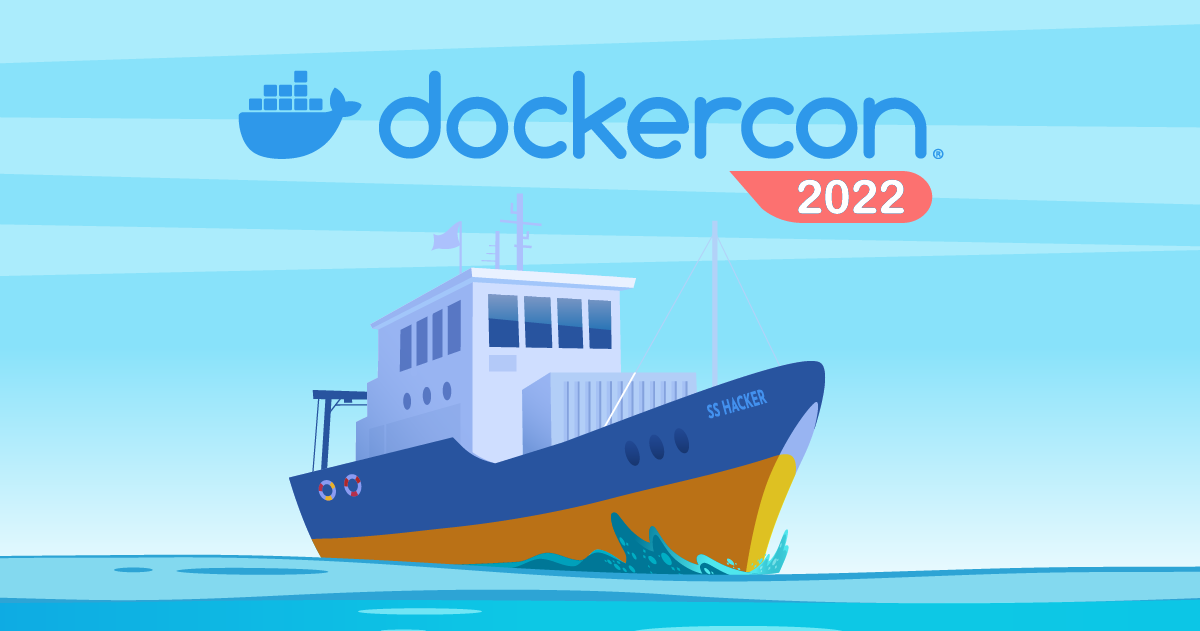Join us for DockerCon2022 on Tuesday, May 10. DockerCon is a free, one day virtual event that is a unique experience for developers and development teams who are building the next generation of modern applications. If you want to learn about how to go from code to cloud fast and how to solve your development challenges, DockerCon 2022 offers engaging live content to help you build, share and run your applications. Register today at https://docker.events.cube365.net/dockercon/2022.

The world of software development moves fast and is always changing. It’s why continuous learning is so important — and why it’s essential to invest the time to keep up with the latest techniques, technologies, and, sadly, threats.
Because as a developer, it’s not just enough to come up with new, innovative ways to accomplish your goals. Those methods also need to be strong enough and reliable enough that users can trust in them.
It’s one of the many reasons why we hold DockerCon every year. We want everyone in the developer community to have the tools you need to take on any new challenge easily so you can keep innovating and redefining what’s possible.
This year is no exception. With DockerCon right around the corner, let’s take a look at three big trends in the application development world — and get a sneak peek into how DockerCon will help you get the tools you need to tackle them!
More complexity, more quality, and less time
Developers have always been under pressure to deliver better quality software, faster. That’s not new. But today’s application development is layering that drive for good and fast with complexity and continuous delivery. The result? Expectations that have never been higher.
Every day brings increasing demand for feature-rich, consumer-grade experiences that are, at the same time, secure and resilient by design. And developers are rising to meet this demand with a vast array of tools, services, and technologies — many of them open source and easy to consume right off the shelf.
All that complexity ends up creating a double-edge sword. You have more freedom and more tools at hand than ever before, enabling you to find just the right cog for your application machine. But at the same time, you have to spend time sourcing, comparing, evaluating, implementing, and managing these tools, which takes time away from innovation. (RedMonk calls it the developer experience gap. They recently sat down to chat about it with Docker CTO Justin Cormack.)
It’s a tough problem, but one you can address by finding ways to simplify workflows and, as a result, increase productivity. If you’re running into this, then be sure to check out our deep dive into the upcoming Docker Extensions feature at DockerCon. You might also want to check out the session about quickly creating production-ready APIs or the session about reducing the complexity of integration tests. There are also sessions around best practices and lightning talks with cool hacks for using Docker. Make sure you register so you can see the full agenda when it goes live!
The evolution of cloud-native development
It’s an incredibly exciting time for cloud-native application development. And if you’re reading this blog, then you probably know how container technology has fundamentally changed the way we build applications.
But there’s also new, exciting advancements on the horizon, ones that can leverage containers and other technology. Trends like low-code and no-code development are enabling lines of business to collaborate with developers much more directly in the design of cloud-native solutions, while other advancements like WebAssembly, composable applications, and FaaS/serverless are making applications more complex, fluid, and ephemeral. Even infrastructure changes like edge computing are decreasing response times and increasing flexibility in applications.
Trends like these are empowering developers to do great things, but you need development environments and workflows that can give you the flexibility you need to take advantage of these advancements.
At DockerCon, you’ll find talks on using Docker with WebAssembly, AWS Lambda, microservices, IoT, and more to help give you flexibility and choice in your application architecture.
Software supply chains are getting more complex
Open source is everywhere these days. It’s become a de facto standard for development, unlocking new levels of application capabilities — and the potential for introducing vulnerabilities into your software supply chain.
These can become big problems with the potential to affect entire ecosystems. You need to be able to know exactly what’s in your software and be able to trust the components that you’re building into it. This also includes the many dependencies that make up your application.
It’s why we recently released a new SBOM command in the Docker CLI as part of an open source collaboration with Anchore using their Syft project. It’s also why we’re dedicated to helping you secure your software supply chain.
Make sure to join us at DockerCon for sessions about these and other software supply chain advancements. In addition to a sessions specifically about the SBOM CLI command, there’s also sessions about protecting your systems from vulnerabilities, using trusted content from Docker Official Images or Docker Verified Publishers, and more.
Join the conversation at DockerCon 2022
All this is just a taste of what’s to come at DockerCon 2022 on Tuesday, May 10th. The full agenda will be released next week, so make sure you register to get notified when it goes live!
Also, if you’re new to Docker or containerized applications (or just want a refresher), be sure to sign up for the 3-hour Getting Started with Docker workshop on Monday, May 9th led by Docker Sr. Developer Advocate Shy Ruparel.
Come hang out with the Docker community and learn how to navigate these trends so you can spend more time innovating and less time on everything else.
